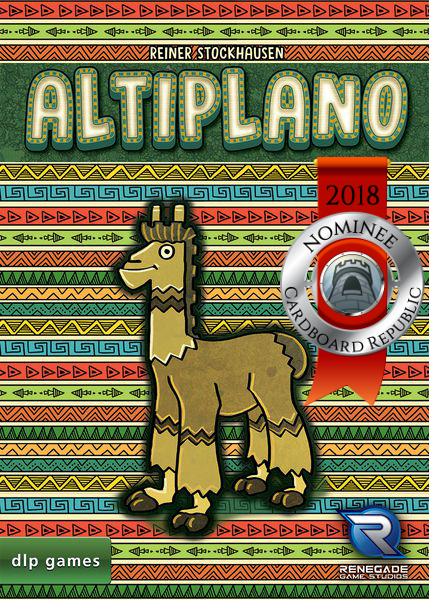The Cardboard Republic has rolled out the annual Laurels of the Republic awards, celebrating the best new games released in 2018 for each of the gamer archetypes. What follows are the finalists for one of those groups.
 Whether it’s amassing the largest armies, hoarding the most gold, or building the best village, Architects are always on the lookout to expand their sphere of influence as much as possible. These world builders thrive on games where they feel the game has a point and that the best way to secure victory has more options than simply cracking skulls. Careful, methodical, and always looking to trade short term goals for long term opportunities, games of this nature reward strategy, persistence, and a sense of progression more than anything else.
Whether it’s amassing the largest armies, hoarding the most gold, or building the best village, Architects are always on the lookout to expand their sphere of influence as much as possible. These world builders thrive on games where they feel the game has a point and that the best way to secure victory has more options than simply cracking skulls. Careful, methodical, and always looking to trade short term goals for long term opportunities, games of this nature reward strategy, persistence, and a sense of progression more than anything else.
And with that, here are The 2018 Laurel Finalists for Architects:
Honorable Mention: SpaceCorp
Publisher: GMT Games | Players: 1-4 | Play Time: 30-210 Minutes
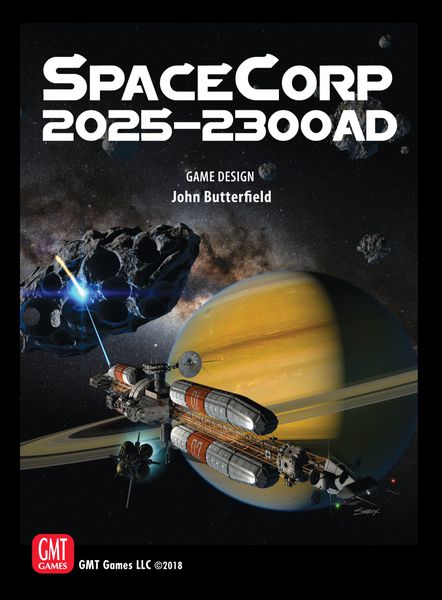 When it comes to intricate and expansive civilization-building or space-faring board games, many of the most renown fall under the subgenre of the ‘4X’ game. A video game term coined in the 90s and subsequently brought to tabletop, a 4X game refers to a game’s four core gameplay pillars of EXplore, EXpand, EXploit and EXterminate, leading to games that can range from solitary and passive to highly interactive and combative. Yet when it comes to a desirable 4X-style game, the vast majority of Architects adore the concepts surrounding three of those core ideas but whose reluctance grows when a game leans even modestly into the Extermination side.
When it comes to intricate and expansive civilization-building or space-faring board games, many of the most renown fall under the subgenre of the ‘4X’ game. A video game term coined in the 90s and subsequently brought to tabletop, a 4X game refers to a game’s four core gameplay pillars of EXplore, EXpand, EXploit and EXterminate, leading to games that can range from solitary and passive to highly interactive and combative. Yet when it comes to a desirable 4X-style game, the vast majority of Architects adore the concepts surrounding three of those core ideas but whose reluctance grows when a game leans even modestly into the Extermination side.
We’re looking at you, Twilight Imperium.
Luckily, SpaceCorp is unquestionably a 3X game, offering everything this group prefers in a game about building, creating, and exploring without the whole messy parts of blowing each other up in the process. In this space-faring jaunt, SpaceCorp invites players into the vast and untamed world of, well, our own solar system.
Over the span of three eras, each player is an Earth based entity looking to profit off of humanity’s insatiable drive to push out into the Final Frontier. How your company accomplishes this, however, is incredibly open-ended. In each successive era, focusing on the initial push to Mars, then to the outer planets, and finally to nearby star systems, each player is presented with myriad decisions on how to become the most profitable space-going enterprise. Whether it’s exploring unknown pockets of the nearby cosmos, to generating scientific breakthroughs in genetic engineering, asteroid mining, or FTL travel, to establishing new human colonies, SpaceCorp is all about deciding a launch point for what you’d like your interplanetary corporation to focus on as a victory condition, and then working towards that goal.
SpaceCorp reminds us that space is plenty big for different goals and that competition doesn’t have to mean domination. With a strong focus on exploration, development, and securing your own legacy in outer space – not to mention profit margins – this is precisely the kind of rich and lengthy-yet-benign space-based sim that Architects will be over the moon for.
The Nominees

Number Five: Dice Hospital
Publisher: Alley Cat Games | Players: 1-4 | Play Time: 45-90 Minutes
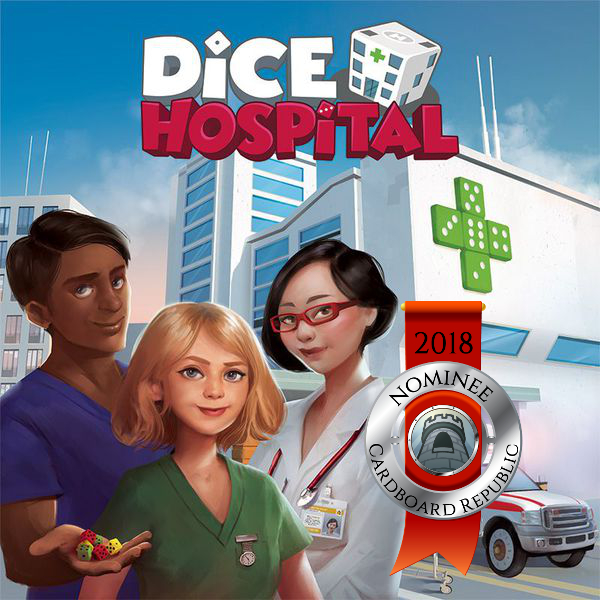 Dice have a long and storied history, and for quite some time their existence has become inextricably tied to the very idea of ‘gaming’. Game dice serve a valuable purpose providing variance, and through that unpredictability, replayability. Nearly every person has experienced the thrill when dice work in your favor and the disappointment when they don’t. Because that’s what dice do. That’s their job.
Dice have a long and storied history, and for quite some time their existence has become inextricably tied to the very idea of ‘gaming’. Game dice serve a valuable purpose providing variance, and through that unpredictability, replayability. Nearly every person has experienced the thrill when dice work in your favor and the disappointment when they don’t. Because that’s what dice do. That’s their job.
Yet some games have experimented with roles for dice beyond merely rolling them, where their pip values stood in as something else, be it unit strength, intelligence, and in a few cases like Dice Hospital, its health.
Yes, in this game, the dice before you are sick patients and it’s your job to save as many as possible. As a leader of a prestigious polyhedron clinic, your responsibility over eight scant rounds is to try to treat and release as many dice as you can to secure the win.
Each round, a number of dice of three different colors are rolled and added to the overall patient intake pool by way of ambulances. Each player will also add either a new room or a new medical specialist from a row of options, both of which are designed to help you treat your boxy patients. Then, using lightweight worker placement, you assign your limited hospital staff to treatment rooms to increase the value of the dice in your wards. Any untreated dice each round tick down one. If a die’s value goes above 6, it gets discharged and you score points. On the other hand, if a die drops below a value of 1, it, erm, dies. And that’s bad. Obviously.
Dice Hospital is the lightest game on this list, but its original theme and two-pronged focus on treating dice and upgrading your facilities in order to more efficiently to so stands out all the same. Architects adore games of progress and improvement, and since this is pretty much the game’s entire mission, it serves as an excellent dosage of what they find enjoyable in a game.
Number Four: Dinosaur Island
Publisher: Pandasaurus Games | Players: 1-4 | Play Time: 90-120 Minutes
Welcome to…Dinosaur Island! A land unlike no other, for you are intrepid planners and scientists capitalizing on a breakthrough in genetic engine…
Look, it’s Jurassic Park. Everything about this game is Jurassic Park: the Board Game in every conceivable way besides the IP, from extracting DNA, to constructing an island-based dino park, to the possibility of the animals escaping and chomping on some of your attendees if you skimp too much on security. And while the game replaces the Jurassic Park license with an equally 90s motif complete with a bright, neon color palette, it not matching its better known commercial clone hardly diminishes the most totally radical game experience of…building and maintaining a theme park.
In this game, each player is put in charge of a competing dinosaur theme park, with the intention of trying to have yours be the most valuable by the time the game ends. Every round you must invest your scientists into acquiring Dino DNA and new dinosaur blueprints. Next, you spend precious capital on upgrading your park’s technologies, attractions, and recruiting specialists. Then, you allocate your worker pool towards increasing the size of your dinosaur habitats, breeding new dinos, and beefing up your security to keep those new thunder lizards in check. Security is particularly essential, because although new dinosaurs increase visitors to your park, if you don’t have enough containment, they will get loose and eat some very important sources of VP and/or income. (Also known as people.)
Plus, not all of them are lawyers. So it’s just not ok.
Beneath Dinosaur Island’s retro graphics and sprawling array of well-produced game components belies a thoughtful and highly flavorful game about the efforts needed to cultivate, grow, sustain, and expand your very own Dinotopia. The game excels at highlighting both the challenges, complexity, and rewards that go into making a theme park thrive (let alone a dinosaur-based one), and thanks to its tableau-style focus and a multitude of ways to approach that goal, this entire game is practically genetically tailored for the Architect crowd.
Number Three: Architects of the West Kingdom
Publisher: Renegade Game Studios / Garphill games | Players: 1-5 | Play Time: 60-80 Minutes
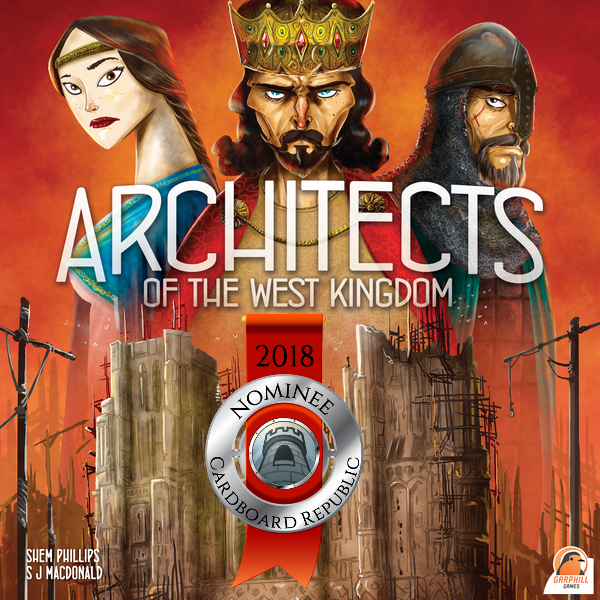 New Zealand-based Garphill Games has been making games for a decade, but it wasn’t until its curiously-concocted idea of creating the North Sea trilogy – three independent games that tell a consecutive story of the Viking age and (with an expansion) can be combined into one mini campaign of conquest and exploration – that they made a name for themselves within the larger gaming community. Building on their success and reception, Garphill has followed up with a new trilogy, starting with Architects of the West Kingdom. This time the focus is on the former lands of granddaddy Charlemagne, in what we now call France.
New Zealand-based Garphill Games has been making games for a decade, but it wasn’t until its curiously-concocted idea of creating the North Sea trilogy – three independent games that tell a consecutive story of the Viking age and (with an expansion) can be combined into one mini campaign of conquest and exploration – that they made a name for themselves within the larger gaming community. Building on their success and reception, Garphill has followed up with a new trilogy, starting with Architects of the West Kingdom. This time the focus is on the former lands of granddaddy Charlemagne, in what we now call France.
As the name implies, Architects of the West Kingdom is centered around the construction of various buildings, all in the hopes of impressing the King and keeping yourself in good standing. As royal architects, each player’s goal is to gather resources, hire craftsmen, attain building plans, and combine those efforts into crafting buildings. Most buildings provide the all-important points and drive the game forward, but many also bestow additional bonuses or benefits to other actions, further aiding your ambitions.
Accomplishing this all in Architects is done via worker placement system, where the strength of the action you take on the board is contingent on the number of your workers present there. More people mean stronger actions, but it also invites others to interfere with those workers by way of kidnapping and jailing them temporarily.
In a time where royal favor is everything, in this game even architects aren’t afraid to get their hands dirty, apparently.
Despite some blocking and interference to contend with, most of your efforts in the game will be individually focused on maximizing point scoring opportunities by planning and calculating how to optimally get the materials you need to construct the buildings you want – all for the glory of the King, of course. It’s engaging, straightforward, and far more about building things up than tearing them down. For this group that’s as royal pursuit as there is, not just for Architects of the West Kingdom, but Architects the world over.
Number Two: Altiplano
Publisher: Renegade Game Studios / dlp games | Players: 2-5 | Play Time: 60-120 Minutes
It’s not unheard of for a publisher having a banner year to end up with multiple games up for nomination, but this is only the second time we’ve had a company with two games in the same category, which is an accomplishment in its own right. But Renegade was on a roll in 2018, which included bringing over Essen 2017 darling Altiplano to America.
Or…back to America? South America, specifically.
Altiplano is the spiritual successor to the much beloved ‘bag building’ game Orleans, with a few key differences. For one, the game blissfully takes place somewhere other than a medieval European city – in this case the culturally rich and uncommonly used Altiplano plateau of the Andes mountains. Second, rather than drawing and allocating workers from the bag, you’re drawing resources to fuel different actions. Actions which are determined from rondel-style movement. The result is a game that moves the competitive essence from conflict over worker spaces to one mostly focused on optimizing individual tableaus based on the resources at your disposal. It also moves it squarely into the wheelhouse of those development-loving Architects.
Also, it has one of the best first player markers ever with a super photogenic alpaca. We call ours Dustin.
Over each game of Altiplano, your goal is to maximize point-scoring opportunities, which requires balancing the acquisition and usage of six core resources to acquire refined resources, increase production, procure more advanced action spaces, and above all, fill your warehouse with excess goods for endgame scoring. With a bevy of strategic avenues and resources to prioritize, there is no shortage of ways to become the most prosperous village in the end. This game is tailor-made for those who enjoy growing and improving their territory as they see fit while absorbing a sense of accomplishment that their decisions have a direct impact on winning. Altiplano may take place on a high plain, but for Architects, there is no worry about their interest plateauing here.
We knew Altiplano was going to be a Laurel contender very early on. Its performance only underscores how much it resonates as a remarkable Architect-friendly game thanks to a wonderfully refreshing theme, multi-tiered decision-making, limited scope of interference, and desire to create the most lucrative village. It came quite close to even earning the top spot, save for yet another 2018 game about village building…
The Winner
2018 Architect Laurel – Everdell
Publisher: Starling Games | Players: 1-4 | Play Time: 40-80 Minutes
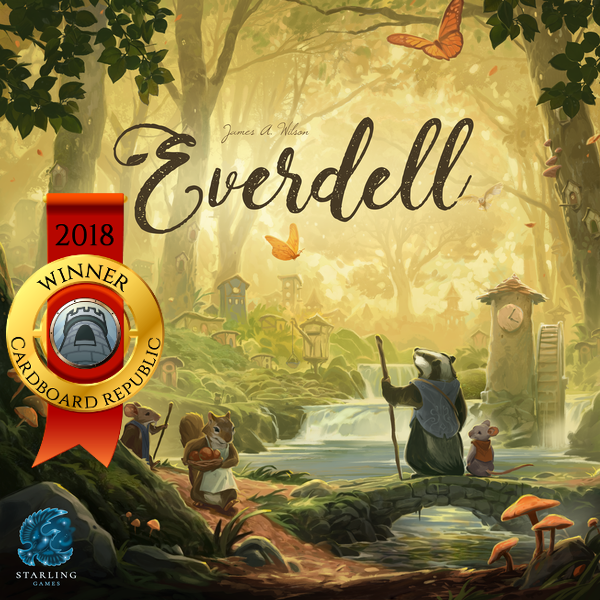 So…yeah. We didn’t see this one coming either. But what a splendid surprise it turned out to be.
So…yeah. We didn’t see this one coming either. But what a splendid surprise it turned out to be.
The general interest (or lack thereof) in a game can be fueled up or down somewhat by its designer or publisher, but for the vast majority of gamers, the largest and most lasting question for a game is: is it any good? Do the mechanics make sense? Is it well designed? Does its theme adequately reflect both the source topic and does it match what the game is trying to accomplish? Is it replayable? And, ultimately, is it fun?
Everdell is a yes, yes, and yes, to every one of those metrics. And then some.
Everdell came on to the scene originally via a highly successful Kickstarter, and while its reception upon release was initially more of a slow-burn, its appeal as an affable and visually gorgeous lightweight tableau building game spread like wildfire in the lattermost months of 2018.
And rightfully so…though its denizens would probably prefer to skip the flame-based imagery.
In Everdell, each player is a leader of an anthropomorphic group of animals looking to build up their town throughout the coming year. Using a mix of worker placement and tableau-building elements, Everdell draws you in with its stunning artwork and game components but keeps you invested thanks to a tight economy and sense of achievement as you scamper around over four rounds gathering the necessary resources to build up your wooded hamlet. Workers are used to gather goods, complete events, and draw new cards, whereas cards in the game depict potential citizens to recruit or buildings to build that provide a host of benefits and effects when added to your town. Synergy runs high in this game, with copious room for highly productive towns that are as rewarding as they are beneficial. Through your decisions, Everdell wants you to craft, modify, expand, and upgrade your town as best you can, all with the intent of erecting the most prosperous town beneath the Ever Tree before the winds shift and winter returns anew.
When it came to games that were colorful, accessible, replayable, and possessed a dynamic-yet-focused goal of creating the best tableau possible, few games of last year were was exemplary or inviting to Architects as Everdell, and why it reached the top perch for 2018.
![]()
Everdell Contest!
We thought about different ways to highlight how great the winning title of the Architect Laurel is. Given the game’s animal-centric focus, we thought pretty extensively about ways we could play that side up without running into a host of logistical issues or the need for like 1,500 rabies boosters on standby. Some of these included a trip to a local zoo, partnering with the National Park Service to go out and see some real life examples of animal habitats being actively used, and throwing a bunch of birds, rabbits, and dogs into a room with raw building materials and see how long it would take them to erect a rustic series of storefronts. Through some limited testing, though, we found out that most real life animals aren’t that great at construction or at taking demands. So we ultimately decided to just focus on the game by raffling off a copy instead. And bonus – we only had to use one set of rabies shots to find all that out! Poor, poor Claudius…
Anyway, let’s get to it!
That’s right! Enter below for your chance at your very own copy of Everdell!
Note: In honor of their award recognition, Starling Games has kindly provided a copy of this game for giveaway purposes.
![]()
Be sure to check out the 2018 Laurel Award pages for the other archetypes once they go live!


